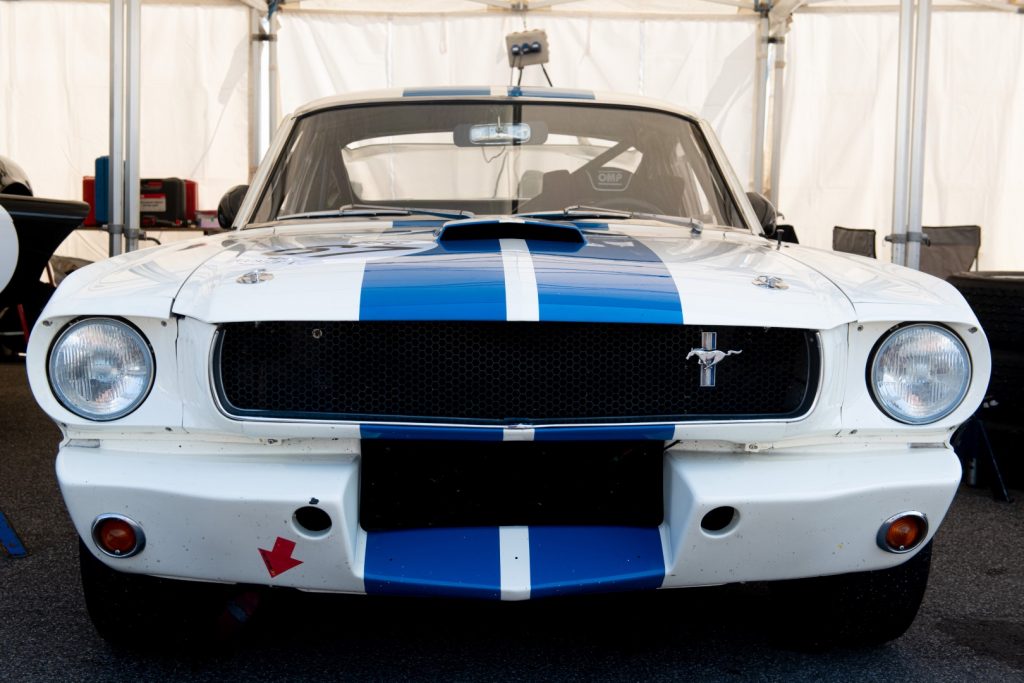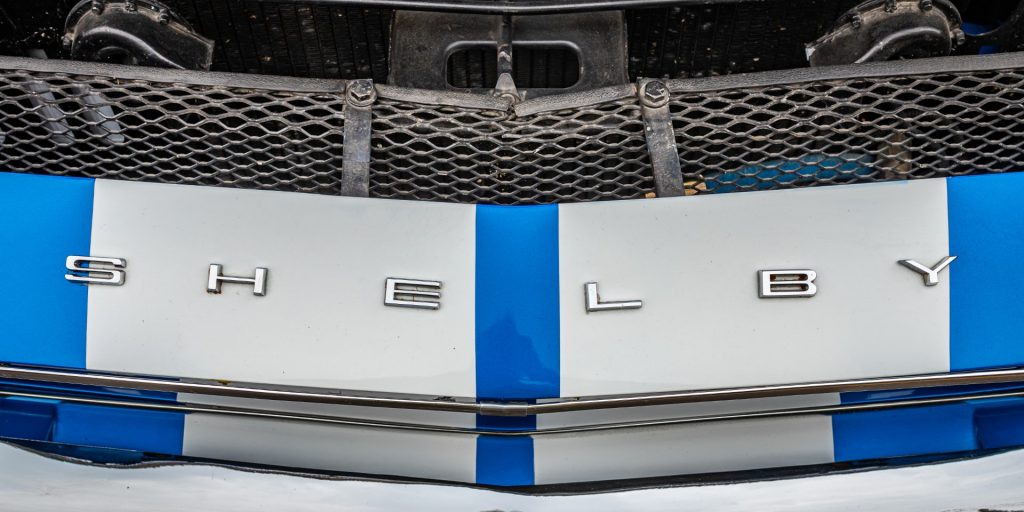A Shelby Mustang probably caught your eye at a local auto show, on the street, or while you’re at a Ford dealership. Shelby Mustangs date back almost as far as the Mustang itself. The first model of Shelby Mustang made its debut in 1965, solidifying the pony car’s reputation as fast and enhancing Ford’s racing heritage.
There has always been a lot of power and speed in Mustangs. Carroll Shelby took this and built on it to create a Mustang capable on the race track and inspiring car tuners in years to come. Despite Shelby Mustang’s wide range of variations, they all share a blend of performance features and race-inspired design that makes them stand out.
Shelby and Mustang’s legacies have become so interconnected that discussing one without mentioning the other has become nearly impossible. So, if you’re looking at your le mans merchandise and wonder about the history of the renowned Shelby Mustang, this post is for you.
The Man Behind The Vehicle
Born in Leesburg, Texas, Carroll Shelby had a lifelong obsession with speed. Before maneuvering land vehicles, he was a flight instructor during WWII and began racing cars not long after. A quarter-mile drag race was his first competition, in which he participated in a hot rod powered by a flathead Ford V8.
He raced Aston Martins in Europe, breaking land speed records at Bonneville Salt Flats and winning Sports Illustrated’s Sports Car Driver of the Year award two times. Shelby left racing in 1960 due to heart problems despite his opposition. However, Shelby’s contribution to motor history doesn’t end there.
1965 Shelby Mustang (GT350)
It all started when Ford commissioned Shelby to create a performance racer version of the 1965 Mustang. Ford hoped that Shelby would add more performance to the new Mustang based on Shelby’s success with the Cobra. The first Shelby Mustang, a GT350 in Wimbledon White, was unveiled on January 27, 1965.
Shelby GT350R (the race version) had won its first SCCA race against Corvettes and other powerhouse cars by February of the same year. The name Shelby became synonymous with Mustang performance in no time at all. In 1965, 562 GT350s were produced.
1966 Shelby Mustang (GT350/GT350H)
1966 was a breakthrough year for Shelby. For the ’66 model, Shelby opted to include a few consumer-friendly features, which made it a more consumer-friendly car than its predecessor. A few fold-down backseats increased trunk space, new colors were added to reduce cabin noise, and exhaust pipes were lengthened. His team also included an optional automatic transmission.
Rent-a-racer GT350Hs became extremely popular as race-day performers, resulting in Hertz purchasing 1,001 of them to distribute at rental car locations across the country. Shelby saw this as big business, which gave Shelby Mustang worldwide exposure.
1967 Eleanor (GT500)
Eleanor debuted in 1967. The name refers to Nicolas Cage’s 1967 Shelby GT500 copy in the new adaptation of ‘Gone in 60 Seconds,’ which replaced the 1973 Ford Mustang Mach 1 in the classic film. The GT500 was the first American vehicle to be equipped with a roll bar. It also came with a big-block V8 engine. This model is popular among collectors.
1968 Shelby Cobra (GT350/500/500KR)
Shelby began using the name Cobra again in 1968, reclaiming some of its heritage. The ’68 models were renamed Shelby Cobra GT350 and Shelby Cobra GT500. Their shorter hoods characterize this variation with air intakes closer to the front. They also have modified grilles, giving this year’s design a distinct shark-like appearance. This year’s model also received engine upgrades, with the GT350 receiving a 302 cubic inch engine and the GT500 acquiring a 427 Cobra Jet.
However, in terms of performance, the new top-tier Shelby was the GT500 KR (KR meaning King of the Road). The original GT500-KR had a 428 cubic-inch Cobra-Jet V8 engine that produced 360 hp and came in convertible form.
1969-1970
Carroll Shelby became less involved in the creation of the 1969 model. Due to slower sales and disagreements, Shelby ended his partnership with Ford in 1969. Yet, he continued to release Shelby Mustangs until 1970. The 1970 version managed to sell, but it was only a byproduct from the earlier model legally labelled with 1970 vehicle identifiers.
2006 – The Return Of Shelby (GT-H)
Shelby hasn’t produced a new Mustang for a long time. But after Ford redesigned the Fifth Generation Mustang, Shelby got down to business and began creating the 2006 Shelby GT-H special edition. Debuting at the 2006 New York International Auto Show, the car was designed to pay tribute to the original GT-350H and exhibited a black color scheme with gold racing stripes.
Around 500 were produced for Hertz rental car outlets nationwide. Anyone looking to rent a bonafide sports car had the opportunity of renting a Shelby Mustang yet again.
2010 – The Classic Comeback (GT350)
In early 2010, Shelby announced that it’d revive its classic Shelby GT350 Mustang for the 2011 design. The car had more than 500 horsepower and many styling subtleties from the classic Shelby Mustang.
2012 – 50th Anniversary Edition
Shelby American unveiled three unique Shelby Mustangs at an auto show in Detroit on January 10. The cars (limited to 100 units) were designed to commemorate the company’s 50th anniversary. Shelby American spent the majority of 2012 marking its 50th anniversary.
The company also celebrated the release of Shelby 1000. The car was featured at the New York International Auto Show on April 5 and is powered by a 5.4L V8 engine capable of generating 1100 hp or more. On May 10, Carrol Shelby left the world silently. He died at Baylor Hospital in Dallas. The cause of death hasn’t been revealed.
2013-Present
As time went by, the Shelby Mustang evolved. The later models featured a more fashionable, aggressive design and newer technologies such as carbon-fibre materials. Other models featured modern parts, a new and improved grille, and more visible labelling on the inner surface and outside of the vehicle.
In Closing
Mustangs have always had a great deal of power and speed. Carroll Shelby built on this to create many variations of a Mustang good enough to win races and excite car tuners for years. Though the automotive legend is no longer alive to witness the latest iteration of the first car he was genuinely proud of, there’s no denying he’d be delighted with Ford’s promise to deliver racetrack-level results in a vehicle.


